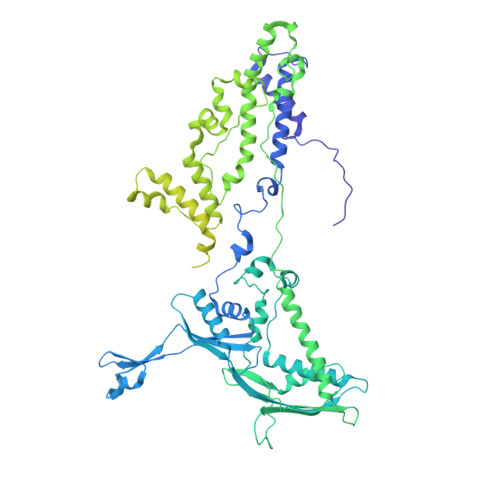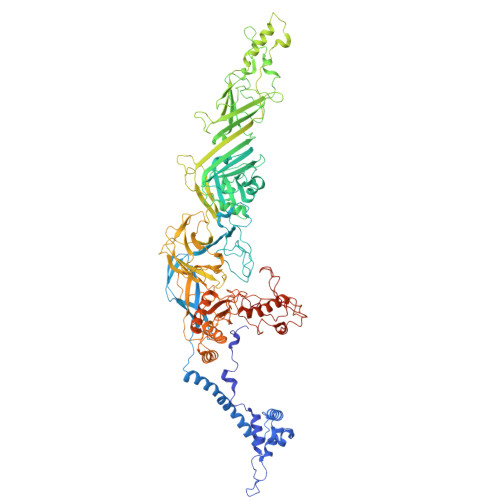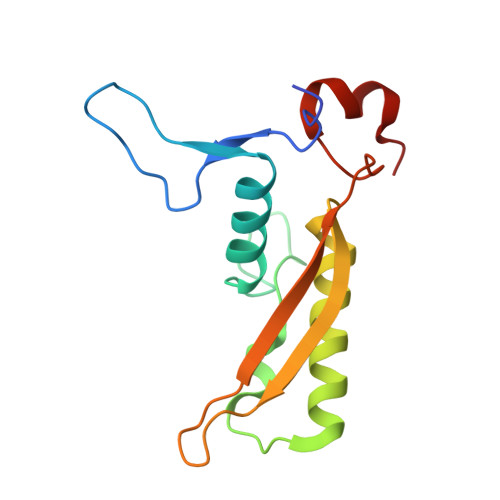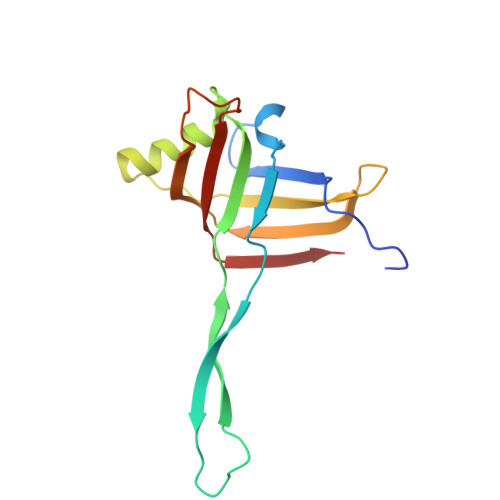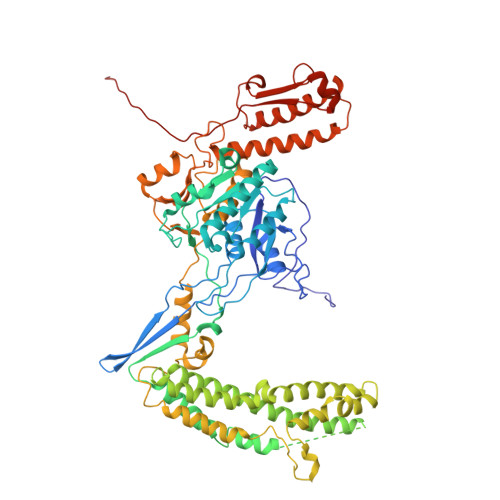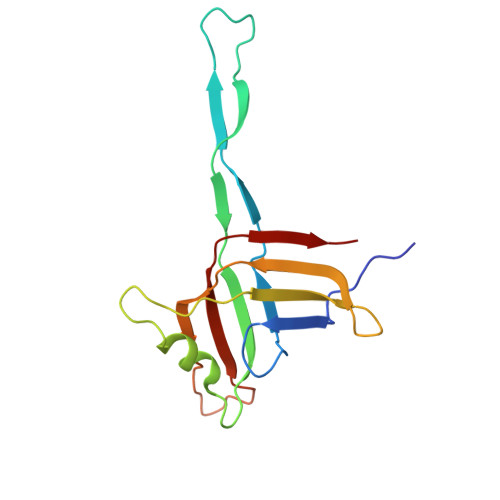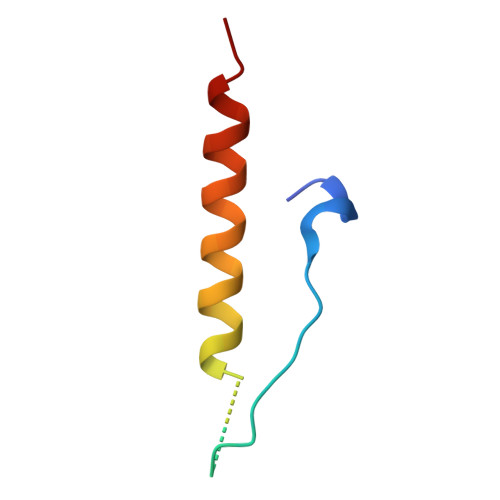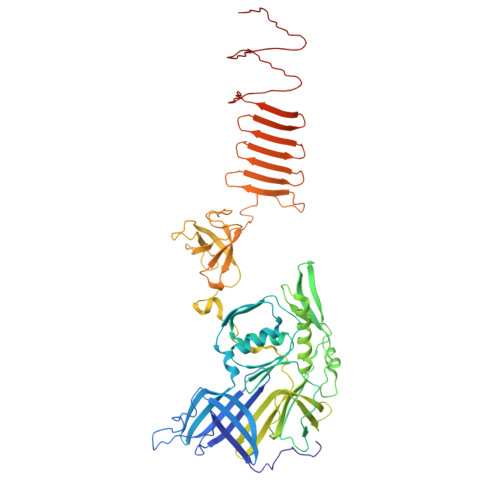Identification and structure of an extracellular contractile injection system from the marine bacterium Algoriphagus machipongonensis.
Xu, J., Ericson, C.F., Lien, Y.W., Rutaganira, F.U.N., Eisenstein, F., Feldmuller, M., King, N., Pilhofer, M.(2022) Nat Microbiol 7: 397-410
- PubMed: 35165385
- DOI: https://doi.org/10.1038/s41564-022-01059-2
- Primary Citation of Related Structures:
7ADZ, 7AE0, 7AEB, 7AEF, 7AEK - PubMed Abstract:
Contractile injection systems (CISs) are phage tail-like nanomachines, mediating bacterial cell-cell interactions as either type VI secretion systems (T6SSs) or extracellular CISs (eCISs). Bioinformatic studies uncovered a phylogenetic group of hundreds of putative CIS gene clusters that are highly diverse and widespread; however, only four systems have been characterized. Here we studied a putative CIS gene cluster in the marine bacterium Algoriphagus machipongonensis. Using an integrative approach, we show that the system is compatible with an eCIS mode of action. Our cryo-electron microscopy structure revealed several features that differ from those seen in other CISs: a 'cap adaptor' located at the distal end, a 'plug' exposed to the tube lumen, and a 'cage' formed by massive extensions of the baseplate. These elements are conserved in other CISs, and our genetic tools identified that they are required for assembly, cargo loading and function. Furthermore, our atomic model highlights specific evolutionary hotspots and will serve as a framework for understanding and re-engineering CISs.
Organizational Affiliation:
Department of Biology, Institute of Molecular Biology & Biophysics, Eidgenössische Technische Hochschule Zürich, Otto-Stern-Weg 5, Zürich, Switzerland.








